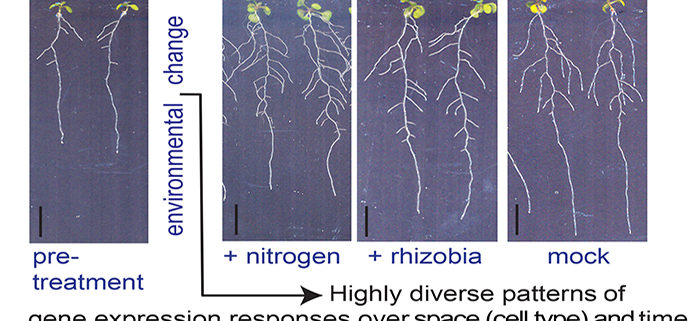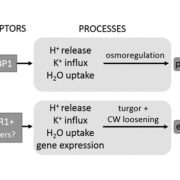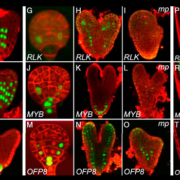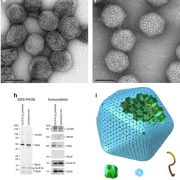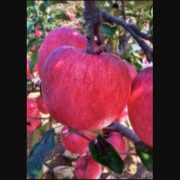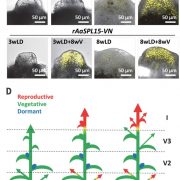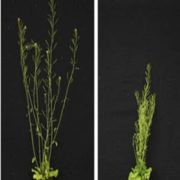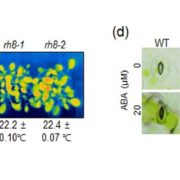Space-Time Continuum of Gene Expression in Lateral Root Development
Walker et al. explore how the environment shapes root architecture. The Plant Cell 2017. https://doi.org/10.1105/tpc.16.00961
By Liam Walker
Background: To acquire nutrients and anchor themselves, plant roots spread both vertically and horizontally in soil. Plants typically have a primary root that grows vertically and lateral roots that arise from the primary root and grow horizontally. The plant root consists of many different types of cells organized in concentric layers around the core of the root. For example, pericycle cells form a layer close to the centre of the root, whereas cortex cells are closer to the outside of the root. The emergence of new lateral roots, depend on the action of specific types of cells, orchestrated by cell-specific changes in gene expression over time.
Question: Our aim was to understand how changes in the environment that affect root architecture are regulated by gene expression changes in different cell types over time.
Findings: We used Arabidopsis plants that contained a gene encoding a green fluorescent protein expressed either only in the cortex or only in the pericycle root cell types. We treated seedlings with either the nutrient nitrogen or a bacterium called Sinorhizobium meliloti, both of which alter lateral root formation, and harvested roots at many time points over two days after treatment. Next, we used enzymes to digest cell walls and detach individual cells from one another, then isolated individual cells using a cell sorting machine able to detect cells expressing fluorescent protein, and then measured gene expression in the isolated cells. We found that thousands of genes changed their expression patterns during the early stages of building new lateral roots, and the genes that showed changes were very different between the two cell types studied. Despite these differences, we found many similarities between the functions that these distinct sets of genes enacted between these different types of cells and between the treatments. This means that although the activity of the protein produced from a gene is important, both the location and timing of gene expression also contribute to its function.
Next steps: This work shows that studying how genes behave across time and space (in different cell layers) is crucial for fully understanding how plants function. It also provides other researchers studying lateral root development and plant environmental responses with an important resource.
Walker, L., Boddington, C., Jenkins, D.J., Wang, Y., Grønlund, J.T., Hulsmans, J., Kumar, S., Patel, D., Moore, J., Carter, A., Samavedam, S., Bonomo, G., Hersh, D.S., Coruzzi, G.M., Burroughs, N.J., and Gifford M.L. (2017). Changes in Gene Expression in Space and Time Orchestrate Environmentally-Mediated Shaping of Root Architecture. Plant Cell https://doi.org/10.1105/tpc.16.00961


